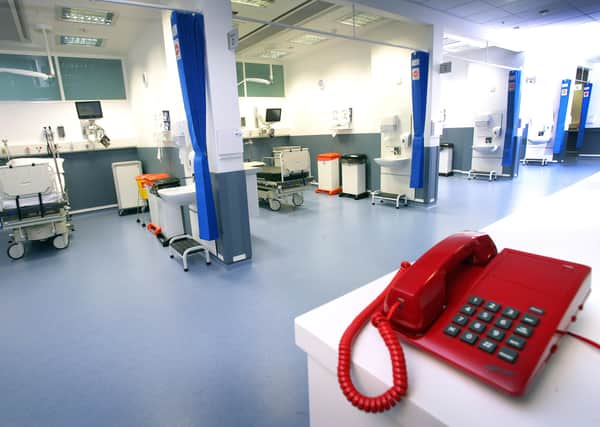NI A&E waiting times ‘like nothing I’ve ever seen’ says top Emergency Medicine doctor


Dr Paul Kerr, vice president of the Royal College of Emergency Medicine in Northern Ireland, was speaking after the latest statistics from the Stormont health department showed that despite fewer patients going through the doors of A&Es here in September more people are being forced to wait over 12 full hours for care.
“These data show the gravity of the situation in Northern Ireland,” Dr Kerr said.
Advertisement
Hide AdAdvertisement
Hide AdThe time period covered by the figures — July, August and September began during a lull between the first and second aves of the coronavirus pandemic and ended as the second wave began to take hold at the beginning of the autumn.
In September, a total of 58,543 patients attended A&E in Northern Ireland — a huge drop compared to the same time in 2019 when it was 57,580.
Despite the drop in patient numbers, there was a sharp rise in the number of people being forced to wait at least 12 hours before being admitted — from 3,464 in September 2019 to 4,212 in September last year.
Dr Kerr said: “We have had less attendances and yet the number of 12-hour waits has increased significantly. It is simply shocking. It is like nothing I have ever seen.
Advertisement
Hide AdAdvertisement
Hide Ad“Our Emergency Departments are under an extreme amount of pressure and staff and hospitals are doing all they can to expand capacity, stretch resources and get patients through the system to the right care. But many are working beyond full capacity.”
He continued: “This leads to the most vulnerable patients waiting in corridors, for an unacceptable amount of time, to access a hospital bed. But there simply are not enough beds to admit patients to. Meaning ambulances cannot offload patients and are stuck waiting outside departments, unable to return to the community to urgent calls.
“These practices are unsafe, undignified and unacceptable. They present a huge risk to patient health - particularly corridor care which inevitably increases the risk of hospital acquired infection and spread of covid - and puts a huge amount of pressure on staff who are already stretched thinly.”
He also expressed concern about the drop in total patient numbers.
Dr Kerr said: “We fear that there are people in the community who are not receiving the urgent care they need.”